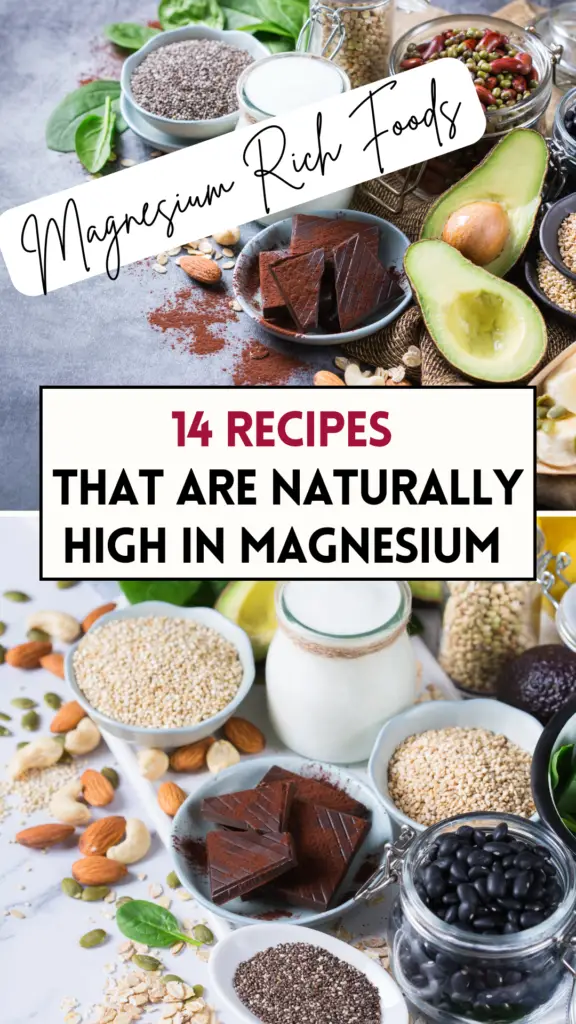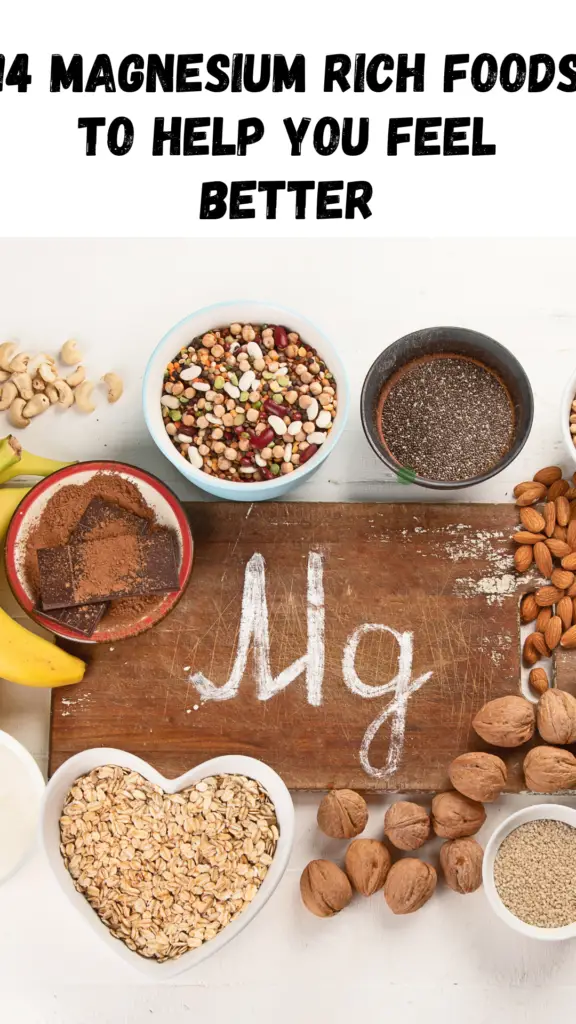Share via:
Magnesium is an essential mineral that plays a vital role in many bodily functions, including muscle and nerve function, heart rhythm regulation, and bone health.
When magnesium levels in the blood drop below normal—a condition called hypomagnesemia—it can lead to symptoms like muscle spasms, fatigue, tremors, and even serious complications such as arrhythmias or seizures.

Causes of hypomagnesemia include inadequate dietary intake, certain medications, gastrointestinal disorders, and increased urinary excretion.
Fortunately, correcting magnesium deficiency often starts with improving your diet. Consuming magnesium-rich foods can help restore healthy levels and alleviate symptoms.
Here are 12 magnesium-packed foods to include in your meals to support your recovery and overall well-being.
14 Magnesium-Rich Foods to Boost Your Magnesium Levels
1. Spinach
Dark leafy greens like spinach are excellent sources of magnesium. One cup of cooked spinach provides about 157 mg of magnesium.
- Spinach and Pumpkin Seed Pesto Pasta: Toss cooked pasta with a pesto made from spinach, pumpkin seeds, garlic, olive oil, and lemon juice.
- Spinach and Chickpea Curry: Simmer spinach and chickpeas in a spiced tomato sauce for a nutrient-packed vegetarian curry.
2. Pumpkin Seeds
These seeds are magnesium powerhouses, offering roughly 150 mg per ounce.
- Roasted Pumpkin Seed Snack: Toss pumpkin seeds with olive oil, salt, and smoked paprika; roast until crispy for a magnesium-rich snack.
- Pumpkin Seed Granola: Mix pumpkin seeds with oats, nuts, honey, and bake for a crunchy breakfast topping.
3. Lima Beans
One cup of cooked beans supplies about 120 mg of magnesium and fiber.
- Lima Bean and Vegetable Stew: Slow-cook lima beans with carrots, celery, and herbs for a hearty stew.
- Lima Bean Salad: Toss cooked lima beans with olive oil, lemon, fresh herbs, and diced red onion.
4. Tuna
- Grilled Tuna Steak with Quinoa Salad: Serve grilled tuna with a side of quinoa mixed with cucumber, tomato, and parsley.
- Tuna and Avocado Wrap: Combine canned tuna with mashed avocado, lemon juice, and spices; wrap in whole wheat tortilla.
5. Brown Rice
- Brown Rice Stir Fry: Stir fry brown rice with mixed vegetables, tofu, and soy sauce.
- Brown Rice and Black Bean Burrito Bowl: Layer brown rice, black beans, corn, salsa, and avocado for a magnesium-rich bowl.
6. Almonds
A handful of almonds (about 1 ounce) contains around 80 mg of magnesium, plus healthy fats and protein.
- Almond-Crusted Baked Chicken: Coat chicken breasts with crushed almonds and bake until golden.
- Almond Butter Smoothie: Blend almond butter with banana, spinach, and plant milk for a magnesium-rich smoothie.
7. Dark Chocolate (85% Cocoa)
Choose dark chocolate with at least 70% cocoa for about 64 mg of magnesium per ounce.
- Dark Chocolate and Nut Bark: Melt dark chocolate, mix with chopped nuts and pumpkin seeds, then cool and break into pieces.
- Dark Chocolate Avocado Mousse: Blend avocado, cocoa powder, dark chocolate, and a sweetener for a creamy dessert.
8. Avocados
Besides healthy fats, one medium avocado contains about 58 mg of magnesium.
- Avocado Toast with Everything Bagel Seasoning: Mash avocado on whole grain toast and sprinkle with seasoning.
- Avocado and Black Bean Salad: Combine diced avocado, black beans, corn, and lime juice for a fresh salad.
9. Non-Fat Yogurt
A cup of plain yogurt provides roughly 30 mg of magnesium and supports gut health.
- Yogurt and Chia Seed Parfait: Layer non-fat yogurt with chia seeds, berries, and granola.
- Cucumber Yogurt Dip: Mix yogurt with grated cucumber, garlic, and dill for a refreshing dip.
10. Bananas
One medium banana contains about 32 mg of magnesium and is great for quick energy.
- Banana Oat Pancakes: Blend banana, oats, and eggs to make simple pancakes.
- Banana and Almond Butter Toast: Spread almond butter on toast and top with sliced bananas.
11. Quinoa
This gluten-free grain offers around 118 mg of magnesium per cooked cup.
- Quinoa and Roasted Vegetable Salad: Toss cooked quinoa with roasted veggies and a lemon vinaigrette.
- Quinoa Breakfast Bowl: Combine quinoa with almond milk, nuts, and fresh fruit for a magnesium-rich breakfast.
12. Cashews
One ounce of cashews contains about 82 mg of magnesium.
- Cashew Stir Fry Sauce: Blend cashews with garlic, ginger, soy sauce, and water for a creamy stir fry sauce.
- Cashew and Vegetable Curry: Cook vegetables in a cashew-based creamy curry sauce.
13. Salmon
A half-cup serving of tofu provides approximately 37 mg of magnesium, along with plant-based .
- Grilled Salmon with Magnesium-Rich Greens
- Marinate salmon fillets with olive oil, lemon juice, salt, and pepper.
- Grill for 4-5 minutes per side until cooked.
- Sauté kale and Swiss chard with garlic and olive oil.
- Serve salmon on a bed of these magnesium-rich greens and sprinkle with sesame seeds for an extra magnesium boost1.
- Superfood Chopped Salad with Salmon
- Grill or bake salmon fillets.
- Toss chopped kale, broccoli, red cabbage, carrots, and toasted sunflower seeds in a bowl.
- Dress with a creamy yogurt-based dressing flavored with lemon, herbs, and tamari.
- Top salad with salmon pieces for a nutrient-dense, magnesium-rich meal
14. Tofu
- Spinach and Chickpea Salad with Toasted Almonds and Tofu
- Combine fresh spinach, cooked chickpeas, diced cucumber, cherry tomatoes, and thinly sliced red onion.
- Add cubed, lightly pan-fried tofu for protein and magnesium.
- Dress with lemon juice, olive oil, salt, and pepper.
- Sprinkle toasted almonds on top for crunch and extra magnesium.
- Mushroom and Spinach Stir-Fry with Tofu and Brown Rice
- Stir-fry sliced mushrooms and spinach in a little oil.
- Add cubed tofu and cook until golden.
- Serve over cooked brown rice for a fiber- and magnesium-rich meal

Why are nuts, seeds, and leafy greens key sources of magnesium for electrolyte balance?
Magnesium-rich foods support overall electrolyte balance by providing magnesium, a key electrolyte mineral essential for regulating nerve and muscle function, maintaining proper hydration, and balancing blood pH and pressure.
Magnesium works alongside other electrolytes such as potassium, calcium, sodium, and phosphate to facilitate the transfer of electrical impulses in nerve and muscle cells, including the heart, ensuring coordinated muscle contractions and normal heart rhythm.
Magnesium also plays a critical role in the active transport of calcium and potassium ions across cell membranes, which is vital for maintaining cellular electrolyte balance and proper muscle and nerve signaling.
By consuming magnesium-rich foods like leafy greens (spinach, kale), nuts and seeds (pumpkin seeds, almonds), legumes, whole grains, and dairy, you help replenish magnesium stores that support these physiological processes.
Tips to Improve Magnesium Absorption
- Pair magnesium-rich foods with vitamin D sources, as vitamin D enhances magnesium absorption.
- Limit excessive alcohol and caffeine intake, which can reduce magnesium levels.
- Avoid high doses of calcium supplements at the same time as magnesium, as they may compete for absorption.
How do magnesium-rich foods support overall electrolyte balance?
Magnesium-rich foods support overall electrolyte balance by providing magnesium, a key electrolyte mineral essential for regulating nerve and muscle function, maintaining proper hydration, and balancing blood pH and pressure.
Magnesium works alongside other electrolytes such as potassium, calcium, sodium, and phosphate to facilitate the transfer of electrical impulses in nerve and muscle cells, including the heart, ensuring coordinated muscle contractions and normal heart rhythm.
Magnesium also plays a critical role in the active transport of calcium and potassium ions across cell membranes, which is vital for maintaining cellular electrolyte balance and proper muscle and nerve signaling.
By consuming magnesium-rich foods like leafy greens (spinach, kale), nuts and seeds (pumpkin seeds, almonds), legumes, whole grains, and dairy, you help replenish magnesium stores that support these physiological processes.
When to Seek Medical Advice
If you experience symptoms such as muscle cramps, weakness, irregular heartbeat, or persistent fatigue, consult a healthcare provider.
Blood tests can confirm magnesium deficiency, and treatment may include oral or intravenous magnesium supplements depending on severity.
Addressing underlying causes, such as medication side effects or gastrointestinal issues, is also crucial.
Incorporating these magnesium-rich foods into your diet can be a natural and effective way to support your magnesium levels and overall health.
Alongside medical guidance, dietary improvements can help you feel better and reduce the risks associated with hypomagnesemia.
I am a writer, editor, and publisher of Grillcuisines.com – an online blog dedicated to sharing grilling tips, accessories, and recipes to encourage more people to get outside and grill.
I’m off to find out the different types of grill foods, their seasons, and how to conduct outdoor cooking properly. I’ll also show you some of my grill-worthy cooking tools & accessories!









